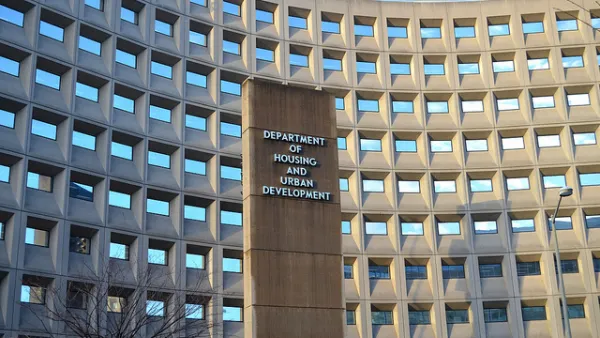A new study examines the question of how to achieve neighborhood transformation through the Choice Neighborhoods federal grant program.
A new study by the Urban Institute, for the use of the U.S. Department of Housing and urban Development (HUD), has examined the effects of the new approach to federal grant funding embodied by the Choice Neighborhoods program.
First an explanation of what makes the Choice Neighborhoods program different from previous federal funding programs according to a post written by study authors Rolf Pendall, Leah Hendey, and David Greenberg:
"Choice, which we studied in Boston, Chicago, New Orleans, San Francisco, and Seattle, and which now is in place in 12 communities across the country, superseded and extends beyond HOPE VI, which sought to replace distressed public housing with mixed-income developments. Choice’s charge is to not just fix housing, but to improve entire neighborhoods. Such an aspiration is both quantitatively and qualitatively different."
The key conclusion of the report: public housing authorities cannot achieve neighborhood transformation working alone. "Instead, as our report shows, key city agencies, mayors, and city councils have to be committed to and engaged in the transformation," according to the authors. In more detail, the post explains how greater levels of success were achieved when city leadership was involved early on in determing the answers to three key questions:
- What's the plan and who made it?
- Who's in charge?
- How do we get the biggest bang for each federal buck?
FULL STORY: Neighborhood success needs citywide commitment

National Parks Layoffs Will Cause Communities to Lose Billions
Thousands of essential park workers were laid off this week, just before the busy spring break season.

Retro-silient?: America’s First “Eco-burb,” The Woodlands Turns 50
A master-planned community north of Houston offers lessons on green infrastructure and resilient design, but falls short of its founder’s lofty affordability and walkability goals.

Delivering for America Plan Will Downgrade Mail Service in at Least 49.5 Percent of Zip Codes
Republican and Democrat lawmakers criticize the plan for its disproportionate negative impact on rural communities.

Test News Post 1
This is a summary

Test News Headline 46
Test for the image on the front page.

Balancing Bombs and Butterflies: How the National Guard Protects a Rare Species
The National Guard at Fort Indiantown Gap uses GIS technology and land management strategies to balance military training with conservation efforts, ensuring the survival of the rare eastern regal fritillary butterfly.
Urban Design for Planners 1: Software Tools
This six-course series explores essential urban design concepts using open source software and equips planners with the tools they need to participate fully in the urban design process.
Planning for Universal Design
Learn the tools for implementing Universal Design in planning regulations.
EMC Planning Group, Inc.
Planetizen
Planetizen
Mpact (formerly Rail~Volution)
Great Falls Development Authority, Inc.
HUDs Office of Policy Development and Research
NYU Wagner Graduate School of Public Service



























